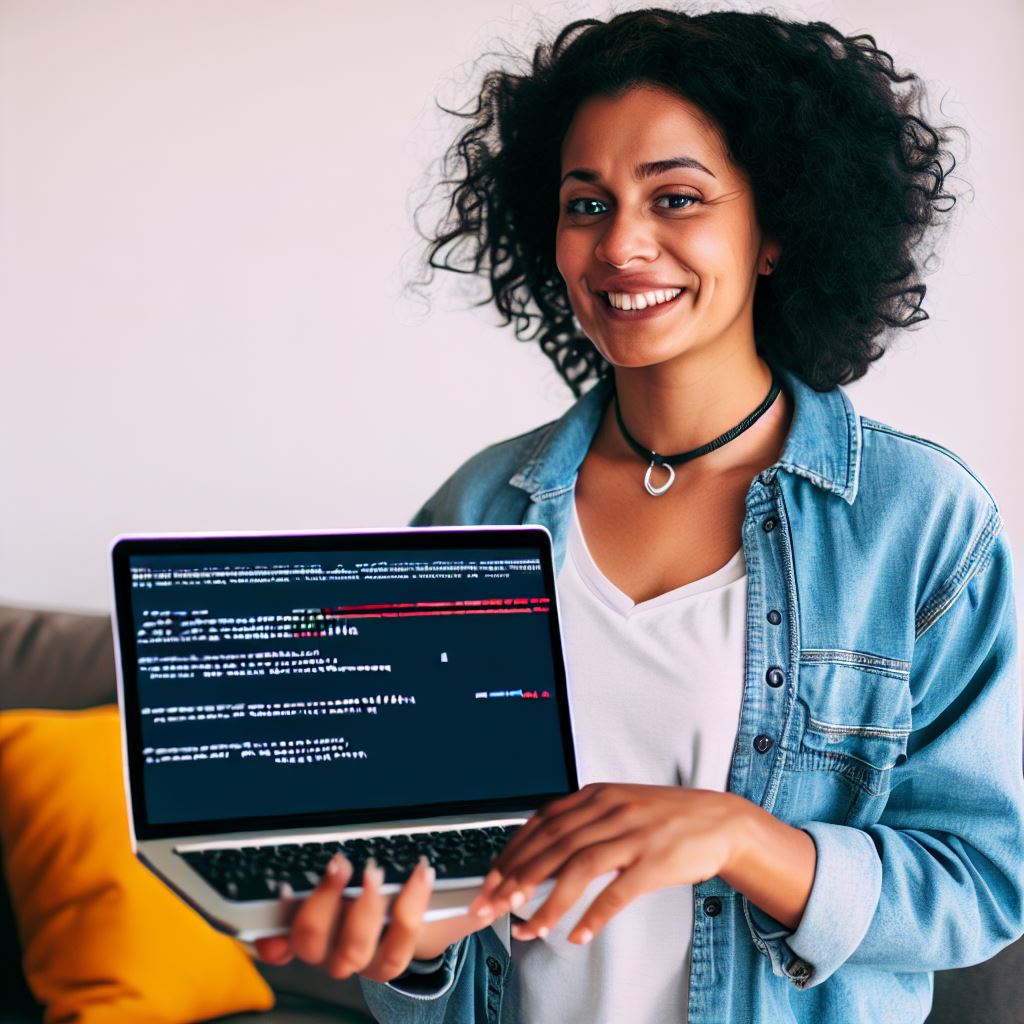Introduction
Let’s Explore Unlocking Learning: A Guide to Using Nearpod Codes
In today’s digital era, technology has become an integral part of education.
It has revolutionized the traditional teaching methods and provided students with endless possibilities to explore and learn.
The importance of technology in education cannot be emphasized enough.
One such tool that has gained significant popularity in recent years is Nearpod codes.
These codes enable educators to create interactive and engaging lessons that are accessible to students on their devices.
With Nearpod codes, learning becomes an immersive experience rather than a passive one.
In this blog post, we will delve into the world of Nearpod codes and explore their potential for transforming the learning environment.
We will discuss the benefits they offer, such as increased student engagement, real-time feedback, and personalized learning experiences.
Additionally, we will explore the practical applications of Nearpod codes in various subjects and grade levels.
From interactive quizzes and polls to virtual field trips and 3D models, Nearpod codes offer a wide range of possibilities to cater to diverse learning styles.
Furthermore, we will provide step-by-step guidance on how educators can effectively integrate Nearpod codes into their teaching strategies.
We will share tips and best practices for creating and delivering interactive lessons, ensuring a seamless learning experience for both teachers and students.
By the end of this blog post, you will have a comprehensive understanding of Nearpod codes and how they can be used to unlock the full potential of learning in the digital age.
Get ready to embark on an exciting journey towards transforming your classroom into an engaging and interactive space with Nearpod codes.
Tech Consulting Tailored to Your Coding Journey
Get expert guidance in coding with a personalized consultation. Receive unique, actionable insights delivered in 1-3 business days.
Get StartedWhat are Nearpod Codes?
A. Define Nearpod codes and their purpose.
Nearpod codes are unique alphanumeric identifiers used to join and access interactive lessons on the Nearpod platform.
- They serve as virtual keys that connect students to synchronized activities.
- With Nearpod codes, students can participate in digital lessons, answer quizzes, and submit responses.
- Teachers generate these codes to allow remote or in-person learning experiences.
B. How Nearpod codes work in conjunction with the Nearpod platform
Nearpod codes act as entry points for students to access the specific lesson a teacher has prepared.
- Teachers create interactive presentations, quizzes, videos, and other media-rich content on the Nearpod platform.
- They then generate a unique six-digit code and share it with their students.
- Students enter the code on the Nearpod app or website to join the session.
- Once connected, students can follow the lesson in real-time, interact with the content, and receive immediate feedback.
C. The benefits of using Nearpod codes for both teachers and students
Using Nearpod codes offers numerous advantages for both teachers and students:
- Increased engagement: Nearpod’s interactive features and multimedia content capture students’ attention, making learning more engaging.
- Active participation: Students can actively participate by completing quizzes, polls, and collaborative activities.
- Real-time feedback: Teachers can instantly assess students’ understanding and provide immediate feedback to address misconceptions.
- Individualized learning: Nearpod allows teachers to personalize lessons and adjust the pace based on students’ needs and abilities.
- Accessibility and flexibility: Nearpod codes enable students to access lessons from anywhere, promoting remote and blended learning.
- Collaborative learning: Nearpod’s interactive tools facilitate collaboration and discussion among students.
- Data-driven insights: Nearpod provides analytics and reports to help teachers track student progress and identify areas for improvement.
- Resource-sharing: Teachers can share their lessons with colleagues, fostering collaboration and reducing curriculum development time.
- Time-saving: Using Nearpod codes, teachers can efficiently manage and distribute lessons to multiple classes.
- Continuous improvement: Teachers can easily make revisions and enhancements to their lessons based on student performance and feedback.
Therefore, Nearpod codes serve as unique identifiers that unlock engaging and interactive lessons on the Nearpod platform.
By using Nearpod codes, teachers can create dynamic learning experiences that promote active participation and provide real-time feedback.
Students benefit from increased engagement, personalized learning, and the flexibility to access lessons from anywhere.
Nearpod codes empower both teachers and students in the digital classroom, fostering collaboration, and driving continuous improvement.
Read: Python vs. Other Languages: Strengths & Weaknesses
How to Create Nearpod Codes
A. Step-by-step guide on creating Nearpod codes
- Access the Nearpod website or app to get started.
- Log in to your account or create a new one if needed.
- Navigate to the “Create” section of the platform.
- Select the activity or lesson you want to share with your students.
- Generate the unique Nearpod code for your selected content.
B. Tips for optimizing the creation of Nearpod codes
Creating Nearpod codes is a simple process that allows teachers to share engaging digital content with their students.
By following a step-by-step guide, educators can easily create unique codes for their lessons or activities.
To start, teachers must access the Nearpod website or use the app on their chosen device.
Logging in to an existing account or creating a new one provides the necessary credentials to begin creating Nearpod Access Keys.
Once signed in, educators can navigate to the “Create” section of the platform.
This is where the magic happens.
Build Your Vision, Perfectly Tailored
Get a custom-built website or application that matches your vision and needs. Stand out from the crowd with a solution designed just for you—professional, scalable, and seamless.
Get StartedTeachers can choose from a variety of interactive activities, lessons, and multimedia options to deliver the educational content effectively.
Selecting the desired activity or lesson is crucial as it determines the type of engagement students will have with the material.
Teachers should consider their learning objectives and choose content that aligns with their instructional goals.
After selecting the content, the next step is to generate a unique Nearpod code that students will use to access the material.
This code acts as a digital key, unlocking the learning experience for students.
It is essential to ensure the code is generated before sharing it with the class.
To optimize the creation of Nearpod codes, teachers can employ a few helpful tips.
1. Customizing the code to make it memorable
Customizing the code can make it more memorable for students, making it easier for them to access the content independently.
Teachers can use creative combinations of numbers, letters, or even keywords related to the topic to create an engaging code.
2. Adding additional instructions or information for students
Additionally, teachers can add specific instructions or additional information to the Nearpod code.
This allows educators to provide further context or guidance to students regarding the content they will be engaging with.
Clear instructions can help students navigate the activity or lesson successfully, ensuring a smooth learning experience.
Most importantly, creating Nearpod Access Keys is an essential skill for teachers looking to unlock interactive digital content for their students.
By following a step-by-step guide and utilizing optimization tips, educators can create memorable codes that enhance the learning journey for their students.
Optimize Your Profile, Get Noticed
Make your resume and LinkedIn stand out to employers with a profile that highlights your technical skills and project experience. Elevate your career with a polished and professional presence.
Get NoticedWhether it’s customizing the code or adding additional instructions, teachers have the power to create dynamic and engaging learning experiences with Nearpod.
Read: Python OOP: Dive into Classes and Objects

Using Nearpod Codes in the Classroom
A. Engaging Students with Nearpod Codes
- Teachers can distribute Nearpod Access Keys to students using various methods, such as projecting the code or printing handouts.
- They can monitor student progress and participation in real-time, allowing for immediate feedback and engagement.
B. Interactive Activities with Nearpod Codes
Enhancing Classroom Engagement with Nearpod Codes
In today’s tech-driven educational landscape, Nearpod has emerged as a powerful tool for educators to elevate learning experiences.
By using Nearpod codes, teachers can transform their classrooms into dynamic, interactive environments that foster active participation and immediate feedback.
Here’s how Nearpod codes can revolutionize teaching:
- Active Learning and Immediate Feedback: Nearpod enables teachers to conduct quizzes and assessments in real-time, promoting active learning. Students receive immediate feedback, helping them learn from their mistakes and stay engaged.
- Virtual Field Trips: With Nearpod, teachers can simulate virtual field trips, expanding students’ horizons beyond the classroom. Multimedia features allow for immersive experiences, making learning memorable.
- Collaborative Discussions and Polls: Nearpod codes facilitate collaborative discussions and polls. Teachers can encourage critical thinking and gather real-time feedback from students, fostering engagement and participation.
To harness the power of Nearpod codes, teachers can:
- Distribute codes through various methods, such as projecting them on screens or providing printed handouts.
- Monitor student progress and participation in real-time, offering immediate support and adjustments.
- Utilize interactive activities like quizzes, virtual field trips, and collaborative discussions to create engaging lessons.
In summary, Nearpod codes empower educators to create dynamic, interactive classrooms where active learning thrives.
They provide immediate feedback, facilitate immersive experiences, and encourage collaboration, enhancing the overall educational journey.
With Nearpod, teachers can unlock their lessons’ full potential and leave a lasting impact on their students’ learning.
Read: Python Functions: Writing Clean & Efficient Code
Best Practices for Using Nearpod Codes
A. Tips for effectively implementing Nearpod codes in the classroom
- Ensuring the availability of devices for all students: Before introducing Nearpod to the class, it is essential to ensure that all students have access to devices, such as laptops or tablets, in order to fully participate in the interactive activities.
- Preparing and testing the content beforehand: To avoid any technical glitches during the lesson, it is important for educators to thoroughly review and test the content they plan to use with Nearpod.
This includes checking multimedia elements, interactive features, and ensuring compatibility with the devices being used. - Encouraging student interaction and providing timely feedback: Nearpod allows for real-time student engagement through interactive activities, quizzes, and discussions.
Educators should encourage students to actively participate and provide timely feedback to keep them engaged and to gauge their understanding of the material being taught.
By adhering to these best practices, educators can create a dynamic and interactive learning environment using Nearpod Access Keys
B. Success Stories and Testimonials from Educators
Many educators have already experienced the benefits of utilizing Nearpod Access Keys in their classrooms.
Here are a few success stories and testimonials:
“Incorporating Nearpod into my lessons has revolutionized the way my students engage with the material.
The interactive features and real-time feedback have increased their understanding and retention.”- Sarah Johnson, High School Teacher
“Nearpod codes have transformed my lectures into interactive sessions where students actively participate and learn from each other.
It has made my teaching more engaging and effective.”- David Thompson, College Professor
“The availability of data and analytics provided by Nearpod has allowed me to customize my teaching to meet individual student needs.
It has had a tremendous impact on student achievement.”- Lisa Martinez, Elementary School Teacher
These testimonials highlight the positive impact that Nearpod Access Keys can have on student engagement, learning outcomes, and overall teaching effectiveness.
Educators across various levels of education have recognized the benefits and embraced the use of Nearpod codes in their classrooms.
In short, effectively implementing Nearpod codes in the classroom requires ensuring device accessibility, preparing and testing content beforehand, and encouraging student interaction.
By following these best practices, educators can create an engaging and interactive learning environment that enhances student learning and fosters academic success.
Read: Decorators in Python: Enhancing Functions Easily
Troubleshooting and FAQs
A. Common issues or challenges that may arise when using Nearpod codes
- Difficulty in accessing or entering the correct Nearpod code.
- Interruption in internet connectivity, leading to session disruption.
- Compatibility issues with certain devices or operating systems.
- Problems with audio or video playback during a Nearpod session.
- Occasional lag or delays in slide loading or response submission.
- Issues with sharing screens or content during a collaborative activity.
B. Solutions or workarounds for each problem mentioned
- Double-check the entered Nearpod code and ensure it matches the teacher’s code.
- Switch to a more stable internet connection or reset the current connection.
- Verify that the device and operating system meet the minimum requirements for Nearpod.
- Check the audio and video settings on the device or try using external audio/video devices.
- Allow sufficient time for slide loading and ensure a stable internet connection for response submission.
- Follow the provided guidelines for screen sharing and ensure all participants are on the same platform.
C. Frequently asked questions related to Nearpod codes
- Q: Can I reuse a Nearpod code for multiple sessions?
A: No, Nearpod codes are unique for each session and cannot be reused. - Q: How can I obtain a Nearpod code for my own interactive presentation?
A: Sign up for a Nearpod account as an educator to generate unique codes for your presentations. - Q: What should I do if my students are unable to join a Nearpod session using the code?
A: Check if the code was entered correctly and ask students to refresh their Nearpod app or browser. - Q: Is it possible to track student progress and responses within the Nearpod platform?
A: Yes, Nearpod provides analytics and reports to monitor student engagement and performance. - Q: Can I use Nearpod codes for self-paced learning outside of the classroom?
A: Absolutely, Nearpod codes can be utilized for self-paced learning, homework, or remote education.
Basically, although using Nearpod Access Keys can enhance learning experiences, a few challenges may arise.
However, by following the provided solutions and understanding the FAQs, educators and students can overcome these issues and fully leverage the power of Nearpod’s interactive platform.
Conclusion
Nearpod codes offer an excellent opportunity to revolutionize the way we teach and learn.
By using this innovative technology, educators can engage students in interactive activities and foster a deeper understanding of the subject matter.
The blog post discussed the various benefits of Nearpod codes, such as real-time assessment, increased student participation, and personalized learning.
Additionally, it emphasized the convenience and accessibility of this tool, making it suitable for both in-person and remote learning environments.
It is essential to recognize the value of incorporating technology in education.
As the world becomes increasingly digital, it is crucial for teachers to keep pace with the changing landscape and equip students with the necessary skills and knowledge.
Nearpod codes serve as a bridge between traditional teaching methods and modern technology, allowing educators to create dynamic and engaging lessons.
To recap the full benefits, teachers are encouraged to explore the platform fully.
By experimenting with different features, they can discover innovative ways to engage students and make learning more interactive.
Nearpod codes provide endless possibilities for creating interactive lessons, quizzes, and collaborative activities.
It is a powerful tool that can transform the learning experience and ignite a passion for knowledge in students.
Incorporating Nearpod codes in education can revolutionize the classroom and enhance student learning.
By embracing this technology, teachers have the opportunity to create dynamic and engaging lessons that cater to individual needs.
So, let us explore and utilize Nearpod codes to unlock the full potential of our students and pave the way for a brighter future.




